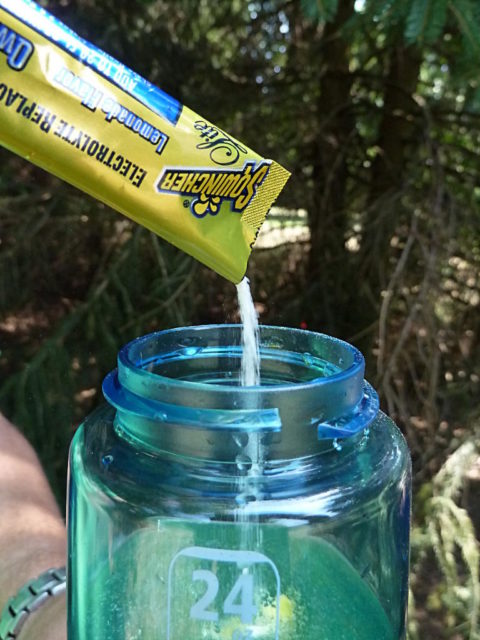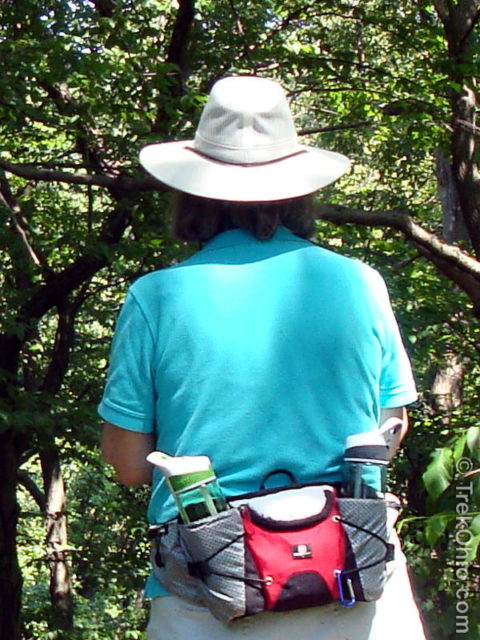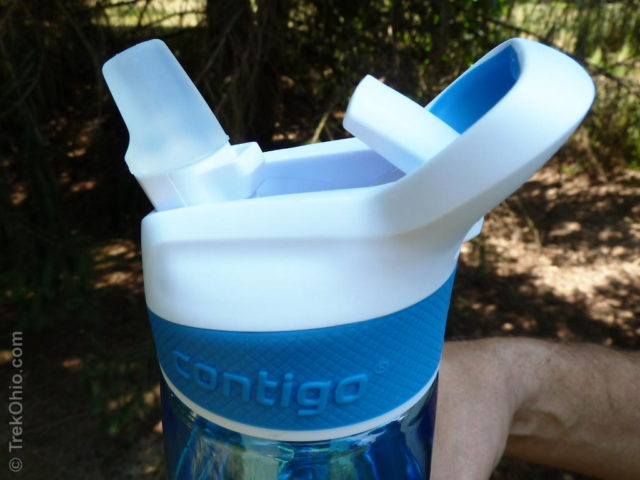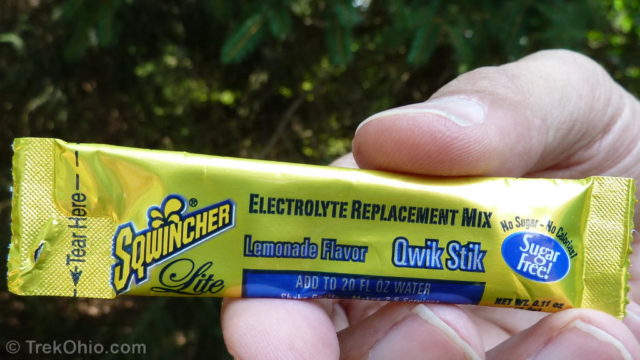It was a hot, humid day with the temperature in the mid 90’s. We’d been hiking for over an hour. The hill that we were climbing was steep. I was in the lead with Deb about 20 yards behind. I’d been out in hotter weather, but it was getting to me. I was feeling really hot and weak. I had eaten a very light breakfast, but was feeling slightly nauseous. I tried to focus and get to the top of the hill. Just a few more steps. Feeling dizzy … I think I’ll just sit on this rock for a minute …

I had classic symptoms of heat exhaustion. Deb caught up with me and helped me re-hydrate with the water (and electrolytes) that I should have been drinking all along. I drank and rested till I was feeling a little better. Then we walked (slowly) back to the car where I had a refreshing drink of chilled water.
What’s the most important thing to bring with you on a hike? That’s easy – water. Of course it doesn’t help to bring it if you don’t remember to drink it! Heat exhaustion is no fun, I can assure you. Without treatment it can turn into heat stroke which can be fatal.
So let’s talk about water, a fairly mundane topic, but an important one for hikers. According to the Mayo clinic, the average man needs 13 cups (104 oz) of water per day and the average women needs 9 cups (72 oz). You will need more during strenuous exercise and in hot weather.
The other thing to consider is that water weighs about 8.3 lbs / gallon (128 oz). For day hikes you can carry the water that you need with you. However backpackers often need to find and purify water on the trail.
On day hikes, I typically wear a day-pack with two external pouches for water bottles. Deb wears a fanny pack which also holds two bottles. We recently started carrying Contigo Autospout bottles. A single bottle holds 24 oz of water, and each of us carries two bottles. If necessary, I could carry additional water in my day-pack.

The Autospout bottles have a hidden spout that pops open with a button. They can be open / closed with one hand — nice if you are holding a walking stick in the other hand. These bottles are a little pricey, but our local Costco was selling a pack of three for $20.

Another consideration is loss of electrolytes (sodium, potassium, calcium, and magnesium) when sweating. In the evening after a hike, I’d occasionally get heat cramps – painful muscle spasms in my legs. Even though I was consuming water on the trail and after returning home, I wasn’t replacing my electrolytes. I used to treat these muscle spasms with a folk remedy. Supposedly drinking pickle juice relieves cramping. It tastes horrible, but it worked for me. However instead of trying to treat the spasms, I now prevent them by replenishing electrolytes on the trail and afterwards.
Many sports drinks contain electrolytes (read the label). For use on the trail, I carry small packets of powdered sports drink mix. I just add it to one of my water bottle, shake, and I’ve got an instant sports drink. I use a brand called ‘Sqwincher’, but others are available.

Finally we decided it would be nice to have extra water when we got back to the car in case we drank all our water while hiking, but were still thirsty. Since the car is going to be really hot after a hike in the summer, we began freezing water. The night before a hike, we partially fill a couple of water bottles and put them in the freezer. The next day we put the frozen bottles in the car. Even though the bottles were sitting for hours in a hot car, they are still cold (and may have some remaining ice) when we get back. Very refreshing!
Should you refill your bottles from surface water along the way? Years ago everyone agreed that all the surface water in North America was contaminated with the parasite – Giardia. Drink any unfiltered water from a back country stream, and you were guaranteed to experience painful stomach distress a few days later. This is one of those well-known “facts” that turned out to be inaccurate. Giardia is present in some surface water, but not to the extent everyone once believed (see link below).
Still it’s better to be safe than sorry. Backpackers carry hand-powered filters (such as those made by Katadyn) or ultra-violet sterilizer wands that remove / kill parasites (like Giardia) as well as bacteria. These are expensive and overkill for day hikers like myself. However, as I do believe in being prepared (former Scout), I carry water purification tablets. They are small, light-weight, and will purify a bottle of water in 30 minutes. How well do they work? No idea — so far I’ve never had to use them.
Additional Information
- Mayo Clinic: Heat & Exercise
- About.com: What are Heat Cramps?
- Mayo Clinic: Heat Exhaustion – First Aid
- Mayo Clinic: Heat Stroke – First Aid
- Wilderness Education Association: Giardia Myth-Buster
Great post and superb advice. We deal with the heat year round in South Florida and one more thing to keep in mind is the wind. On windy days dehydration can sneak up on you as all of your sweat is being wicked away and cooling you and so remembering to drink an adequate amount of water is even more important. Tom
Thanks for pointing out how a cooling wind might trick someone into not drinking enough. I hadn’t thought of this.